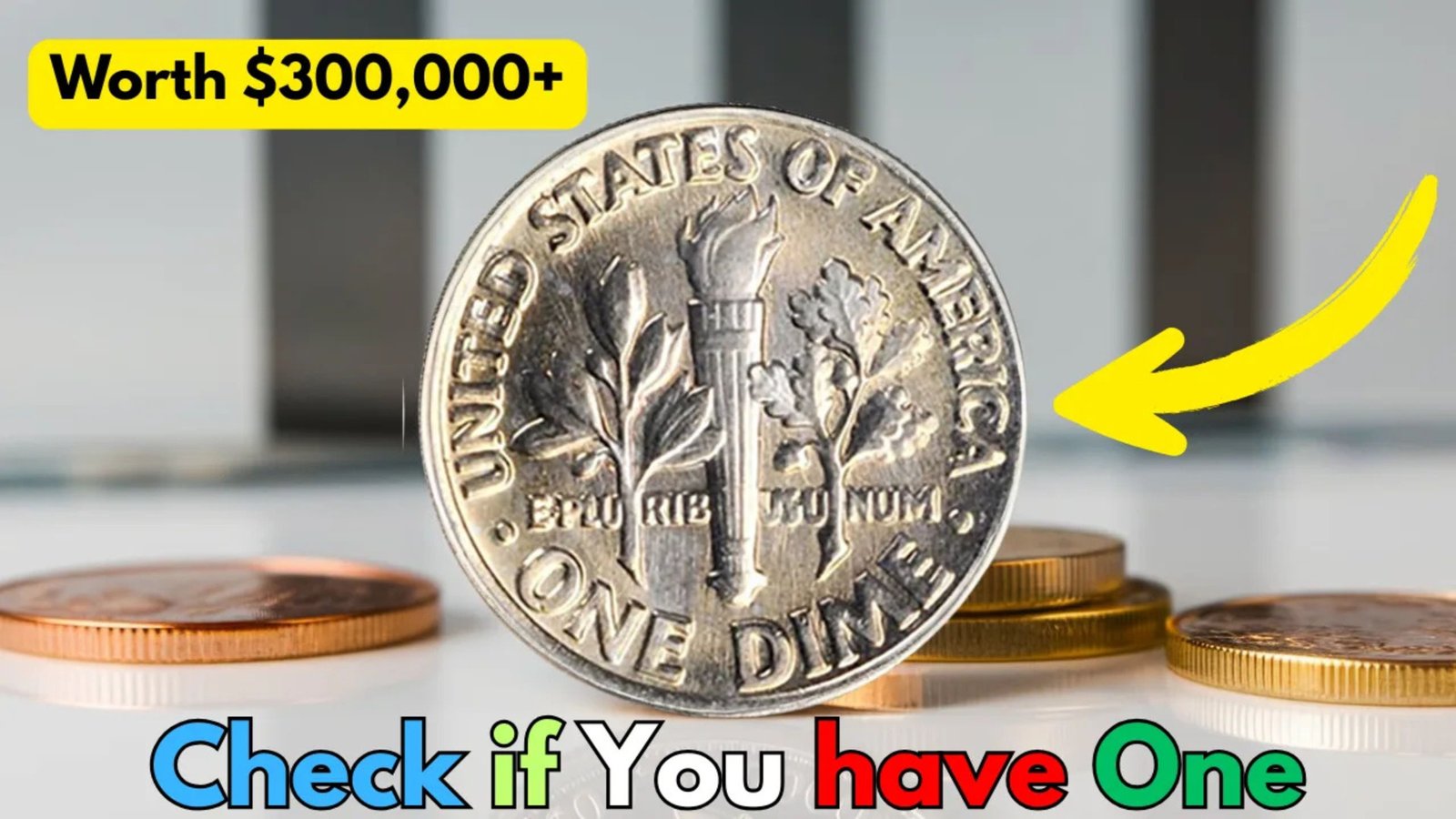Roosevelt Dime : In a remarkable turn of events for coin collectors and everyday change checkers alike, a seemingly ordinary Roosevelt dime without a mint mark has recently been valued at over $300,000 — and it might still be out there in circulation.
This elusive dime, dated 1982, may be quietly hiding in someone’s pocket, piggy bank, or change jar. What sets it apart? A combination of missing details, timing, and rarity — making it one of the most sought-after modern dimes in U.S. history.
The Coin That Defied the Mint
The coin in question is a 1982 Roosevelt dime without a mint mark, struck at the Philadelphia Mint — which was, until that point, beginning to mark its coins with a “P” for the first time since 1980. However, a small batch of 1982 dimes was mistakenly released without any mint mark, making them extremely rare.
Why It’s Worth $300,000+
While Roosevelt dimes are common and still in production, the 1982 no mint mark error stands out because:
-
Mint marks were supposed to be present by 1982.
-
The no-mint-mark versions are extremely rare — likely only a few thousand were released.
-
Most have been lost to circulation over time, making high-grade examples exceptionally valuable.
-
A pristine example in MS-68 condition or higher has fetched over $300,000 at auction due to its rarity and demand among collectors.
How to Spot One
Want to go treasure hunting? Here’s what to look for:
Date: 1982
No mint mark under the date (on the obverse, or “heads” side)
Strong details in the strike, with little to no wear
Lustrous or uncirculated condition adds significant value
If your dime meets all these criteria, it could be a once-in-a-lifetime find.
What’s a Mint Mark, Anyway?
A mint mark identifies the U.S. Mint facility where a coin was struck:
-
“P” – Philadelphia
-
“D” – Denver
-
“S” – San Francisco (usually for proofs)
The absence of a mint mark in a year when one should be there indicates an error, and that’s what drives up the value.
Tips for Collectors and Treasure Hunters
-
Check your change closely — especially dimes from the early 1980s.
-
Use a magnifying glass to inspect the area under the date.
-
If you find a 1982 no-mint-mark dime, do not clean it — cleaning can reduce its value.
-
Consider having it professionally graded by PCGS or NGC.
Final Thoughts
Most of us spend dimes without a second thought — but the next one you pass off at a vending machine could be worth hundreds of thousands. The discovery of a rare 1982 Roosevelt dime with no mint mark is a reminder that valuable treasures can still be hiding in plain sight.
Roosevelt Dime Frequently Asked Questions (FAQs.)
Q: What makes the 1982 Roosevelt dime without a mint mark so rare?
A: In 1982, the U.S. Mint was supposed to include a “P” mint mark on all dimes from the Philadelphia Mint. However, a small number were mistakenly struck without any mint mark, making them a rare error coin.
Q: Where should the mint mark be located?
A: On Roosevelt dimes, the mint mark is located just above the date on the obverse (heads) side of the coin. If there is no mint mark on a 1982 dime, it could be the rare variety — but further authentication is needed.
Q: How can I tell if I have the rare 1982 no mint mark dime?
A: Look for:
-
The date “1982”
-
No letter (P, D, or S) above the date
-
Strong strike and good condition
To confirm authenticity, have the coin examined by a professional grading service like PCGS or NGC.
Q: How many of these dimes exist?
A: It’s estimated that less than 15,000 were released, and only a small number remain in high-grade, uncirculated condition today.
Q: What is the highest price this dime has sold for?
A: A high-grade example (graded MS-68) has sold for over $300,000 at auction due to its rarity and condition.
So next time you get change back, don’t overlook the little things — especially the dimes. One of them might just change your life.
